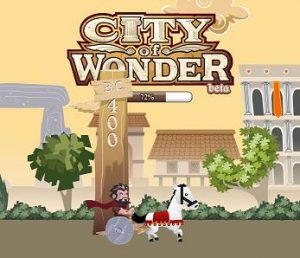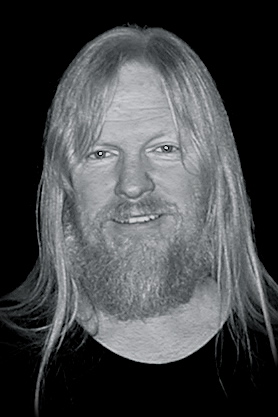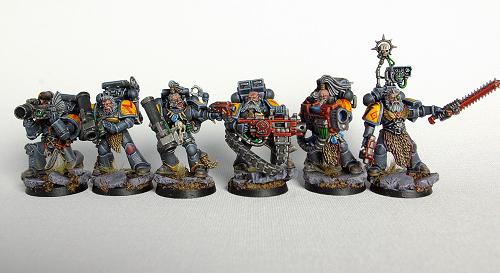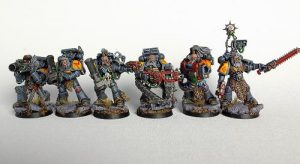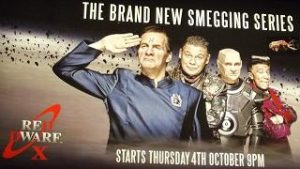This is mark Joseph “young” blog entry #164, on the subject of Versers Proceed.
With permission of Valdron Inc I have begun publishing my third novel, For Better or Verse, in serialized form on the web (that link will take you to the table of contents). If you missed the first two, you can find the table of contents for the first at Verse Three, Chapter One: The First Multiverser Novel, and that for the second at Old Verses New. There was also a series of web log posts looking at the writing process, the decisions and choices that delivered the final product; those posts are indexed along with the chapters in the tables of contents pages. Now as the third is posted I am again offering a set of “behind the writings” insights. This “behind the writings” look definitely contains spoilers because it sometimes talks about what I was planning to do later in the book–although it sometimes raises ideas that were never pursued. You might want to read the referenced chapters before reading this look at them. Links below (the section headings) will take you to the specific individual chapters being discussed, and there are (or will soon be) links on those pages to bring you back hopefully to the same point here.
There is also a section of the site, Multiverser Novel Support Pages, in which I have begun to place materials related to the novels beginning with character papers for the major characters, hopefully giving them at different stages as they move through the books.
This was the previous mark Joseph “young” web log post covering this book:
-
#157: Versers Restart (which provided this kind of insight into the first eleven chapters).
This picks up from there, with chapters 12 through 22.

History of the series, including the reason it started, the origins of character names and details, and many of the ideas, are in those earlier posts, and won’t be repeated here.
Return to Top
Quick links to discussions in this page:
Chapter 12, Hastings 99
Chapter 13, Slade 47
Chapter 14, Brown 60
Chapter 15, Hastings 100
Chapter 16, Slade 48
Chapter 17, Brown 61
Chapter 18, Hastings 101
Chapter 19, Slade 49
Chapter 20, Brown 62
Chapter 21, Hastings 102
Chapter 22, Slade 50
Chapter 12, Hastings 99
I realized that I was almost to a hundred Hastings stories; but it didn’t seem to make any sense to note that in any way.
I was a bit confused on directions at some point; initially I hadn’t given much thought to the directions, but now I wanted her to have arrived on the southern slope of an island in the northern tropics. This was not for any particular reason but that I thought the southern slope probably more habitable, and for Lauren, at least, it should always seem as if God is directing things one way or another. Even here, where there was nothing to do, I felt the need to have God’s hand putting her in the “right” place.
The half-buried staff idea had been in my mind for a while, and at this moment I decided on it.
The rain was an abrupt choice. I wanted to fill the space, and it seemed a good way to do so.
Chapter 13, Slade 47
The comments about the air were a sudden decision. I rather stumbled into it.
I had thought of several possibilities for what the door from the Caliph’s palace would look like from the other side, but the abandoned barn allowed the greatest possibilities. I also began thinking that I was going to have to bring them back here, and it might be a viable end scenario to have them walk into the front door of the barn and vanish to somewhere else.
Just about everything here was done on the spot.
Chapter 14, Brown 60
Again, Derek’s spritish name is modeled on the sprite from the other game. It was also built on his parent’s names, Morach being a joining of Morani and Lelach.
I created the spritish accents and language in part because I had been bothered by Derek’s ability to read the minds of his parents. Under game rules, if you read someone’s mind, you get thoughts in their language, but if you use telepathy you get ideas translated to your language. I decided that Lelach and Morani were the children of sprites who still revered the old spritish customs and language, as so many immigrant families are structured. But then, I also recognized that it made no sense for them to be immigrants to a place where English was spoken; it made more sense to suggest that they were natives in a place where humans who spoke English had moved in and conquered them. This became the uncertain thing behind things Derek didn’t understand. I began to formulate an idea that he would become the sprite who led them to freedom from oppression. The initial idea was that he would prove himself as smart as any human, demonstrating the math skills he had learned elsewhere such as trigonometry and calculus, systems which would be unknown in this world but would have evident uses once he taught them. Not being well versed in these myself, I was not certain how I would do that, but it was the core of the idea.
I decided as I wrote this section to do the telepathy line I had considered; doing it now that he was born made more sense than doing it before this. I knew there were ramifications, and I was going to have to deal with these, but I figured I would.
Chapter 15, Hastings 100
Again, I noticed the number of the chapter, but didn’t let it move me.
Even as I started writing this, I had decided on the cave with the water and steam, and had decided that the gear would be underground, but had not decided whether it would be buried or in the cave, or (what I almost did) caught partly in the rock. Once I got a good picture of what the cave was like, I decided it had to be free.
I also rather abruptly realized that this was, to all appearances, a better home for Lauren than the beach. I had nothing at the beach that should keep her there, and the multi-use fresh water and steam supply here (plus the potential emergency shelter of the cave) commended itself. I realized it’s where I would have camped. Thus I had her change her plans and leave her equipment here while going for the stuff she left at the beach.
I also began to get the idea that Lauren was being forced to rest. In her last world, she had said she did not wish to rest, but to continue to be active. I thought it might make this stall world something of interest if I used it as a forced time of relaxation. In a sense, God could be telling her to slow down a bit for a while, to stop doing so much and enjoy life a bit.
Chapter 16, Slade 48
The prayer was a sudden bit of remembrance from the earlier book. Actually, I had started reading the first book again to my youngest two, as no one but me had read the final draft, and so this prayer from the first of Slade’s chapters was fresh in my mind. It led inexorably to the religious discussion, and I needed something to give the feeling of time to the travel.
Chapter 17, Brown 61
Once Derek had made the telepathic contact with his mother, I realized that I wasn’t entirely sure why he had made contact. It was really because he was lonely, as he couldn’t talk to anyone; but it needed to be put into some kind of conversation that was more than just, hi, how are you. Thus I started trying to think of questions he would ask. I reinforced the idea that something was happening that he didn’t see, in the feel of the old ways.
His mother’s question, whether he could hear her thoughts, sprang abruptly to me. It was the obvious question; I was surprised Derek had not anticipated it. But I had not anticipated it, and there it was staring at me. It also led me to a good consideration of the ethics of practicing psionics on other people, which I guessed would become an important point for Derek’s stay in this world.
As Derek begins using telepathy, I decided that I could italicize all telepathic communications, and that would help the reader follow what was happening. I should probably have done that with the first book, but I had not thought of it in time. I went back and did it in the second book.
Chapter 18, Hastings 101
As Lauren was searching the woods, I too was searching for any reason why the beach was a better place to live. Logically, I could say she had to land there so that all her gear would be on land, but I kept thinking there was something else.
The splash of the fish was something I noticed just as I wrote it.
Chapter 19, Slade 49
The concern about fire came to me at this point, so I included it. Again, it led to interesting spiritual ideas, and I let it have its head–particularly as the banter between Slade and Filp is always funny when they get going.
The argument about Phasius started because I wanted Shella to interact with it, and to draw out of them some backstory. But the backstory I invented at this moment. It owes much to A Man for All Seasons (I think that’s the name) about Henry VIII.
I realized that Slade would have said “I love you” in a very non-committal way, that is, as one says to a friend who has just done something wonderful or wonderfully funny or helpful; but as I typed it, I also realized that these words betrayed something I had been hinting with the comments on her smile, something he did not recognize himself, and she only hoped. As I realized that, the only response I could think for Shella to give was “Thank you, my lord,” the proper response of a lesser lady to a greater gentleman on a compliment. And I realized that this hid her hopes behind the formality, well enough that he would not see them.
Originally this chapter ended with Slade going inside to go to bed. But it was at this point that I realized I was setting up my threesome for a trip that would be probably five days from the border to the castle, and then they were going to have to make it back from the castle to the border without being taken by Acquivar’s guards. I thought now that they should be preparing for that trip; that is, they should be doing something on the way that would make the way back easier. I asked three of my sons what they would do, and Tristan suggested he would try to arrange for horses for the journey. I realized that meant finding allies; and that I had just written a section in which a potential ally, drunk though he was, had revealed himself. Shella, I thought, would see the value, and so I changed the course to let them wait for him.
I wanted the peasants to sound like uneducated peasants, so I played a bit with their grammar.
Chapter 20, Brown 62
I realized after I wrote the telepathic discussion with the mother, that she was almost certain to tell the father. This was going to be a problem, for the reasons Derek considers in the book. It was also likely that the father would suggest that the child was dangerous, that the elders should be told, and that it would mean a very short life for Derek. I thought Lelach would do something to protect him, even if that meant fleeing with him to hide somewhere. But the first step was that Derek was going to find out that his father thought his mother crazy because she had told him Derek had spoken to her mind.
When Derek described the choice, I, too, knew the answer. But I don’t like the characters to always succeed, so I placed the failure in there, then the mind reading, then the success on the second attempt.
I suddenly invented the nicknames. This was exactly the opposite direction from what I had originally intended, but it was the only thing that was going to be readable. Besides, I could not imagine them calling each other by those long multi-syllabic names.
Tonathel is obviously Moses in another world. The idea of Derek now being connected in his mother’s mind as a potential deliverer with religious connotations came to me, and it fit in with Derek’s hopes expressed in the end of the previous book. I drew those connections forward.
Chapter 21, Hastings 102
Between writing Hastings 101 and now I had given consideration to the ramifications of the fish, and the birds. Were they sentient? Were they dangerous? I started this with little idea how Lauren would resolve those questions, but they did seem the questions she would be asking at this point.
Chapter 22, Slade 50
Originally this section was going to begin with Slade’s recognition that he had to do something to prepare for an escape route. But as I had planned that opening, I didn’t know what it was going to be, and after talking to Tristan I went back and changed the previous section to start the process of making allies.
The names came out of thin air when I needed them. I was somewhat torn between having the drunk be part of some connected conspiracy, which I thought helpful but unlikely, and having him wish to hide all sympathies for the priest given the danger of supporting him, which I thought useless though probable. I tried to find a middle ground on that.
Before I wrote this section I got Kyler’s input on the same question of preparing for the return. Where Tristan had suggested speed, facilitated by horses, Kyler suggested stealth. I had, while asking the boys, considered the possibility that Shella might create the illusion that Phasius was still in his cell; now I had them getting Phasius out of the castle and reaching a place where horses were available to ride from there to the next point, change horses and ride to the end of the valley, where they would have to rest and abandon the horses. Tristan also suggested that if there were only one road in their direction and they were on it, they would easily block any messenger from getting beyond them to alert troops down the line. The last leg, up the mountains, would include at least one good hiding, possibly involving invisibility provided by Shella, and a battle in which Slade could defeat a dozen guards.
The only idea I have at this point for Phasius is to run into the abandoned barn and be whisked away. I don’t even know where he would go.
This has been the second behind the writings look at For Better or Verse. Assuming that there is interest, I will continue preparing and posting them every eleven chapters, that is, every three weeks.
[contact-form subject='[mark Joseph %26quot;young%26quot;’][contact-field label=’Name’ type=’name’ required=’1’/][contact-field label=’Email’ type=’email’ required=’1’/][contact-field label=’Website’ type=’url’/][contact-field label=’Comment: Note that this form will contact the author by e-mail; to post comments to the article, see below.’ type=’textarea’ required=’1’/][/contact-form]


